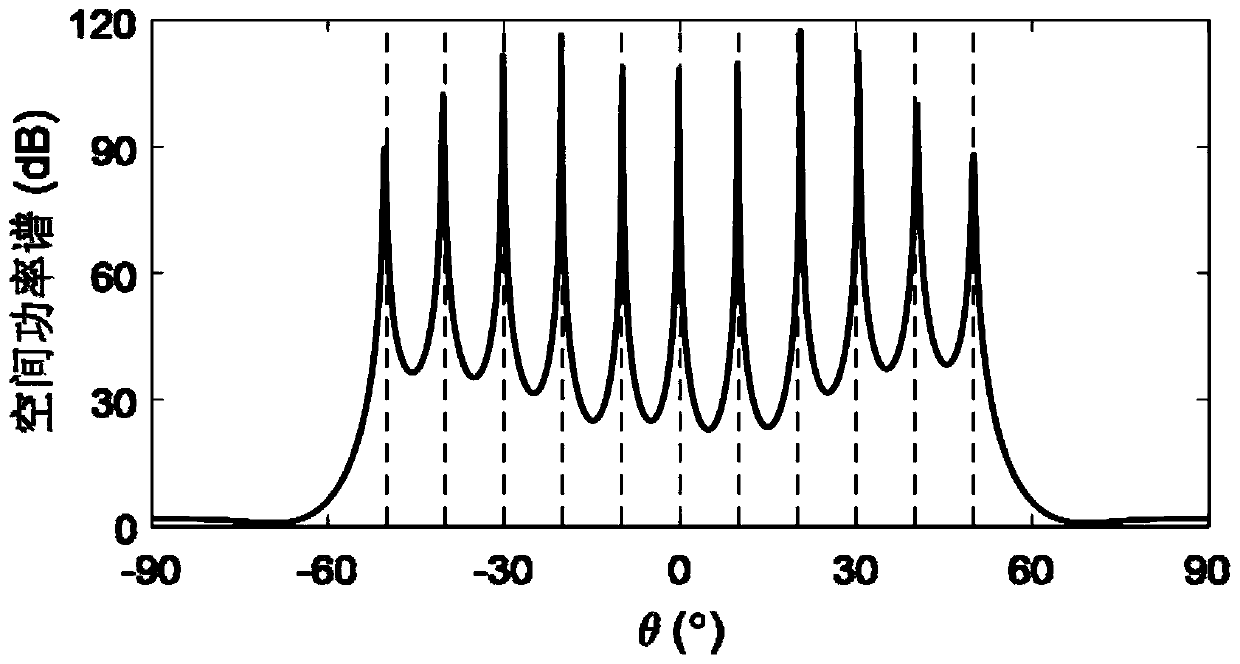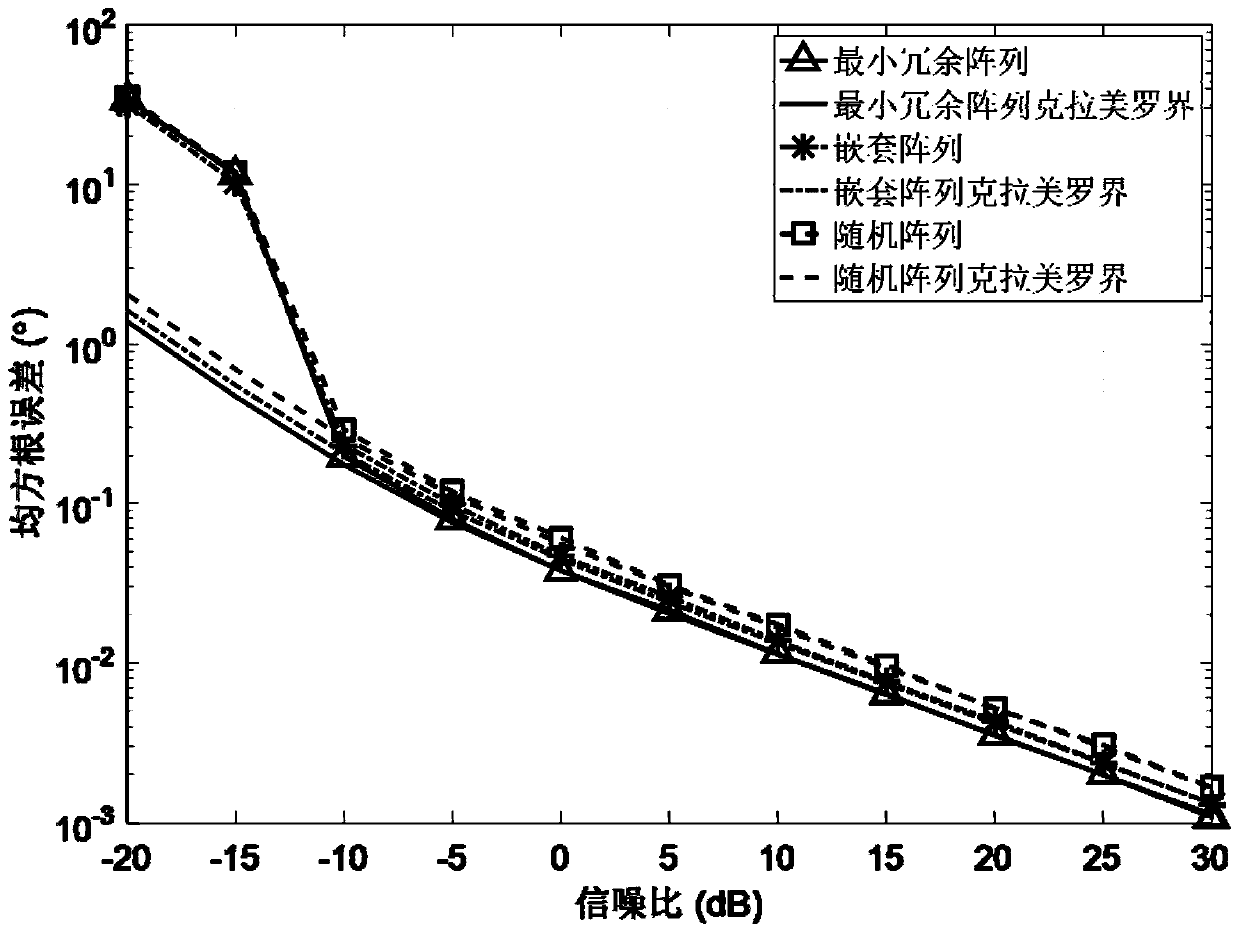Direction of Arrival Estimation Method Based on Sparse Array Direct Interpolation
A direction of arrival estimation, sparse array technology, applied in the field of signal processing, can solve the problems of information loss, DOA estimation performance degradation, matrix operation rank deficiency, etc., to achieve the effect of ensuring the degree of proximity
- Summary
- Abstract
- Description
- Claims
- Application Information
AI Technical Summary
Problems solved by technology
Method used
Image
Examples
example 1
[0069] Simulation example 1: The receiving end uses a sparse array of 7 physical array elements, and the positions of each physical array element are 0, 3d, 5d, 6d, 9d, 10d, 12d; assuming that the number of incident narrowband signals is 11, and the incident direction Uniformly distributed in the spatial angle range of -50° to 50°; the signal-to-noise ratio is set to 0dB, the number of sampling snapshots is T=500; the regularization parameter μ is set to 0.25.
[0070] The spatial power spectrum of the DOA estimation method based on sparse array direct interpolation proposed by the present invention is as follows: figure 2 , where the vertical dashed line represents the actual direction of the incident signal source. It can be seen that the method proposed in the present invention can effectively distinguish the 11 incident signal sources only through 7 physical array elements. However, for the traditional uniform linear array method, only 6 incident signals can be resolved ...
example 2
[0071] Simulation example 2: Consider three different sparse array structures, namely: minimum redundant array, nested array and random array; each array contains 7 physical array elements, then the physical array element position of the minimum redundant array is 0 ,d, 8d, 11d, 13d, 15d, 17d; the physical element position of the nested array is 0, d, 2d, 3d, 7d, 11d, 15d; the physical element position of the random array is randomly generated, in order to ensure the array aperture fixed, wherein the positions of the two physical array elements are fixed at 0 and 12d; assuming that the direction of the incident narrowband random signal satisfies a random distribution with a mean value of 0° and a variance of 1°, the method proposed in the present invention can achieve different array structures The root mean square error performance varies with the signal-to-noise ratio as image 3 As shown, the number of sampling snapshots T=500; at the same time, the corresponding Kramero bo...
PUM
 Login to View More
Login to View More Abstract
Description
Claims
Application Information
 Login to View More
Login to View More - R&D
- Intellectual Property
- Life Sciences
- Materials
- Tech Scout
- Unparalleled Data Quality
- Higher Quality Content
- 60% Fewer Hallucinations
Browse by: Latest US Patents, China's latest patents, Technical Efficacy Thesaurus, Application Domain, Technology Topic, Popular Technical Reports.
© 2025 PatSnap. All rights reserved.Legal|Privacy policy|Modern Slavery Act Transparency Statement|Sitemap|About US| Contact US: help@patsnap.com



